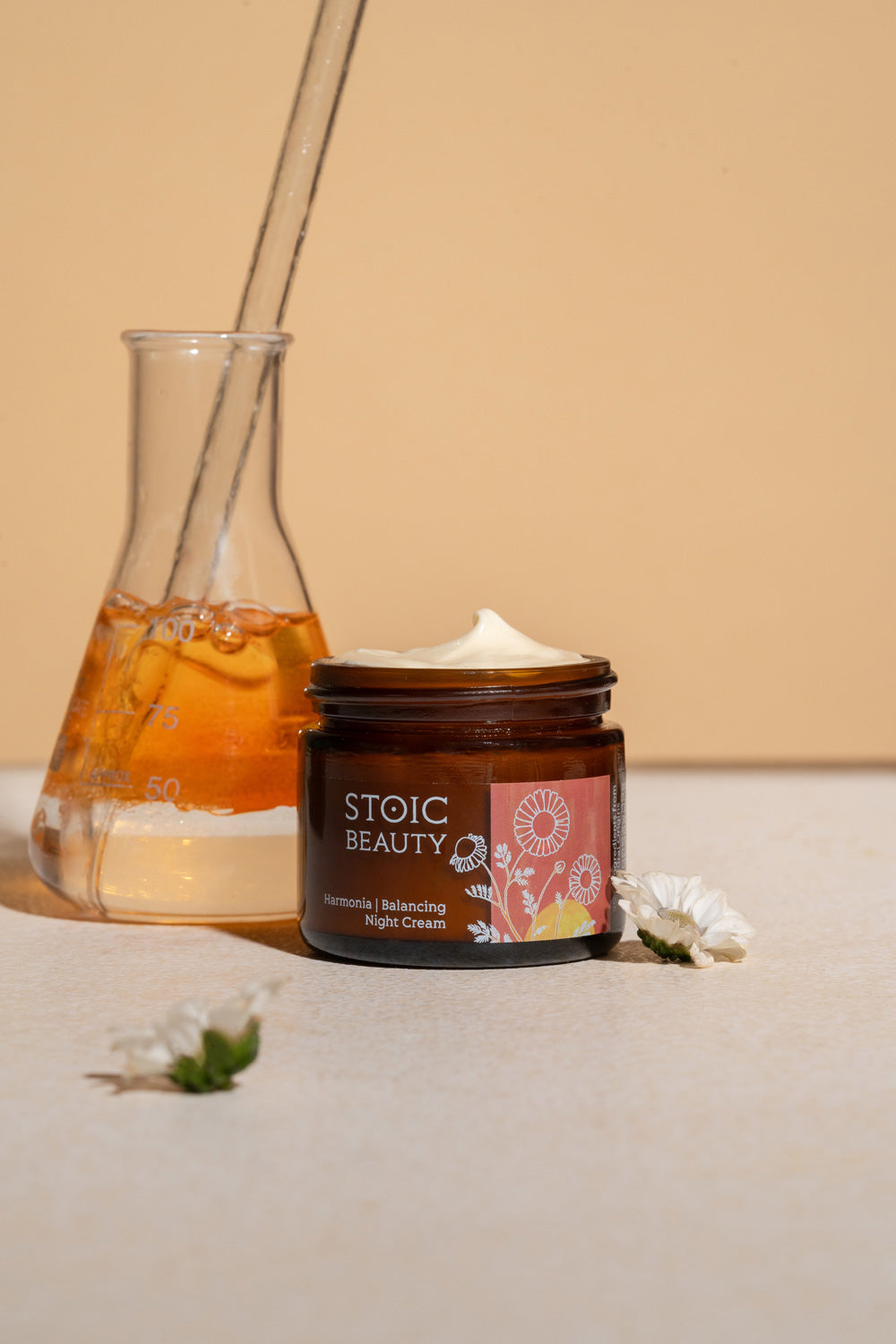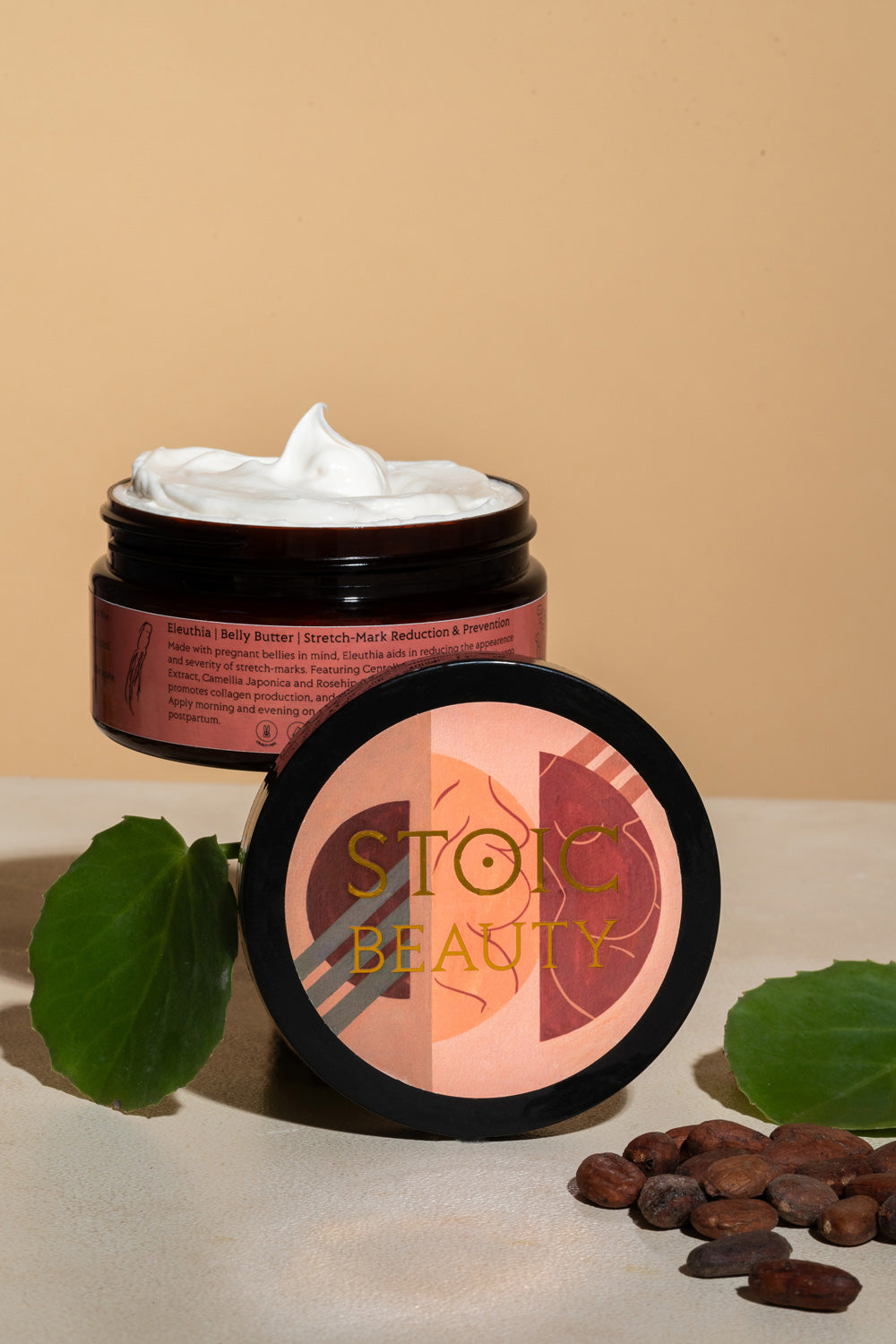
What is Rosacea?
Rosacea, a chronic skin condition that affects millions of people worldwide, has intrigued medical professionals for centuries.
Rosacea, a pesky skin condition that involves redness, irritation, bumps and visible veins, can really put a damper on your complexion. If you've ever wondered why your face turns into a disco ball with redness, bumps, and overall irritation, then you're in the right place. In this blog post, we'll take a trip through time to explore the medical history of rosacea, uncovering the theories that were thrown around like confetti, and how our understanding has evolved. We'll also dive into some exciting recent studies that investigated the use of natural ingredients like golden chamomile, bisabolol, allantoin, argan oil, and German chamomile to keep those pesky rosacea symptoms in check. So, let's embark on this journey and unveil the secrets behind the ever-changing face of rosacea!
Historical Theories on Rosacea's Causes:
Throughout history, various factors were thought to contribute to the development of rosacea. These theories were often influenced by prevailing medical knowledge and cultural beliefs. Here are some noteworthy milestones:
1. Humoral Theory:
Now, let's take a humoral detour to ancient Greece, where the concept of the humoral theory first emerged. Picture this: a bunch of toga-clad philosophers scratching their beards and pondering the mysteries of rosacea. According to these ancient thinkers, the cause of rosacea could be traced back to an imbalance of the four bodily humors: blood, yellow bile, black bile, and phlegm.
So, what did they believe about rosacea? Well, if you happened to have a red face back then, you were considered to have an excess of blood or yellow bile. These ancient scholars believed that this fiery imbalance was responsible for the flushes and redness that characterized rosacea. And this was not a judgement free diagnosis! Imagine the whispers and sideways glances whenever a red-faced individual entered a room—no doubt they were thought of as too passionate, fiery, or maybe even a little too fond of spicy food and alcoholic drinks!
But hey, let's not be too hard on the ancient Greeks. They were doing their best with the knowledge they had at the time. Little did they know that the real culprit behind rosacea lay not in the mystical humors, but in a far more complex interplay of genetics, environment, and the intricate workings of our immune system.
Demodex Mite Infestation: When Tiny Critters Make Themselves at Home on Your Face
Now, let's dig into the fascinating world of Demodex mites and their potential involvement in rosacea. Brace yourself for some microscopic drama!
These little buggers, known as Demodex mites, have called our faces home for a very long time. They may be invisible to the naked eye, but they've been chilling on our skin, snacking on sebum (the oily stuff produced by our pores), and generally minding their own business. But did you know that these mites have also been suspected of stirring up trouble when it comes to rosacea?
Here's the deal: Demodex mites aren't exclusive to people with rosacea, but some studies have found higher numbers of these critters on the faces of rosacea sufferers compared to those with clear complexions. Scientists have been curious about the potential link between these microscopic roommates and the fiery redness that plagues rosacea patients.
But wait, there's more! Why might these rent-free tenants want to take up residence on some people over others? Researchers have discovered that these mites have a taste for something extra: yeast. Yes, you heard that right. The mites cozy up to a particular yeast called Malassezia, which also happens to be present on our skin. This partnership between mites and yeast might create a skin environment that triggers inflammation and contributes to the development of rosacea symptoms. It's like a tiny, microscopic buddy comedy gone wrong!
Now, here comes the cheeky part. Well, it turns out that certain antifungal creams designed to tackle yeast infections "down there" have found a new purpose on our faces. That's right, some clever dermatologists thought, "Hey, if these creams can fight yeast in sensitive places, why not try them on the face too?"
And voila! Vaginal creams were adapted into face creams for rosacea, taking the concept of multi-purpose products to a whole new level. Talk about creative problem-solving!
While the exact role of Demodex mites and yeast in rosacea is still being investigated, this peculiar relationship between microscopic mites, yeast, and face creams adds a touch of whimsy to the scientific pursuit of treating rosacea symptoms. It just goes to show that sometimes, the most unexpected connections can lead to innovative solutions.
But we are not done yet! It's worth noting that rosacea is a complex condition with various contributing factors, and not all cases are linked to Demodex mites or yeast. So, while some individuals have found positive outcomes with anti-yeast medication, it may not be effective for everyone. So, the research continues…
2. Vascular Hypothesis:
Okay, let's fast forward to the mid-20th century. That's when researchers started putting the spotlight on vascular abnormalities and how they might be involved in the crazy world of rosacea. They had this theory that increased blood flow and the dilation (that's just a fancy word for widening) of blood vessels had a major role to play in how rosacea develops and progresses.
Imagine this: your blood vessels going all disco mode, partying it up by expanding and making your face turn redder than a ripe tomato. It turns out, these blood vessel shenanigans can be triggered by intense temperature changes. So, the advice on managing rosacea started getting real specific about lifestyle changes. Say goodbye to steaming hot showers, steamy saunas, and those fiery-hot cups of coffee, because these things could make your face even redder.
The idea was to minimize those triggers and find ways to keep your blood vessels calm and cool. It's like telling your face, 'Hey, chill out and take it easy.' So, cool compresses, gentle skincare routines, and avoiding extreme temperatures became the name of the game for managing that persistent redness.
And hey, remember, we're all unique. What works for one person might not work the same for another. So, it's always a good idea to chat with your dermatologist and figure out the best strategies that fit your individual situation. Keep that rosacea cool and collected!"
3. Immune System Dysfunction:
But wait, the story doesn't end there! In recent years, exciting research has shed new light on the world of rosacea. It turns out that the immune system, our body's own superhero defense system, might be playing a leading role in this skin condition. Researchers have been digging deep into the mysteries of rosacea and have uncovered some fascinating clues.
They've discovered that an overactive immune response, like an overly eager superhero, can be a major player in the fiery inflammation that gives rosacea its signature look. It's like the immune system is going into hyperdrive, unleashing its mighty powers on innocent skin cells, causing all that redness, bumps, and irritation.
But here's the good news: by understanding the immune system's involvement, researchers are paving the way for new and targeted treatments that can help calm the superhero down and restore peace to your skin.
But that's not all! Hold on to your hats because there's another breakthrough on the horizon. Scientists are exploring the marvelous world of the skin's microbiome—the community of friendly bacteria that call your skin home. Recent studies have uncovered a fascinating connection between the gut and the skin, suggesting that certain dietary changes and incorporating probiotics (those friendly bacteria) into your daily routine may offer benefits in managing rosacea. It's like finding a secret weapon hidden in our own bodies! Topical creams that reduce the inflammatory response of an over active immune system can also provide relief: this is why we create Harmonia, a highly anti-inflammatory cream that can reduce rosacea symptoms.
And the progress will continue..
So, while managing rosacea can still be a journey, filled with twists and turns, these exciting research findings open doors to new possibilities. The future holds promise for better understanding and more effective treatments that work hand in hand with our immune system and the magical world of our skin's microbiome.
Remember, you're not alone in this journey. Reach out to your dermatologist or healthcare professional to explore the latest advances and craft a personalized plan that brings hope and relief to your beautiful face!
And if you’re ready, why not add Harmonia Night Cream to your arsenal of lifestyle and self-care routines that help reduce that redness and rosacea flares!




